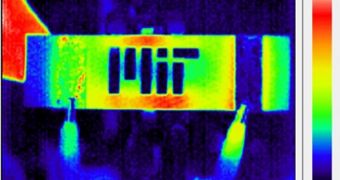Composite materials have began to make their way into a wide variety of industries over the past few years, changing manufacturing methods, and allowing the creation of more advanced technologies. But they do have their dangers, and now experts made an important step in reducing the risk of using them.
One important area where companies have adopted composite materials to a great extent is the airplane manufacturing industry. However, this is also one of those areas where failure is not an option.
Composite material has gained so much popularity due to the fact that they are very lightweight, while at the same time being more sturdy and resistant than many other materials they compete with.
They are generally made up of a solid matrix – made of plastic or metal – in which special machines embed materials such as carbon fiber or glass fiber. The resulting product is lighter than aluminum, but several times more resistant.
This led airplane manufacturers to employ it on new generations of aircraft, but this widespread adoption of the new technology also uncovered a worrying aspect – the lack of damage-detection capabilities.
“With aluminum, if you hit it, there's a dent there. With a composite, oftentimes if you hit it, there's no surface damage, even though there may be internal damage,” explains Brian L. Wardle, an associate professor of aeronautics and astronautics at the Massachusetts Institute of Technology (MIT).
The expert and his team created a new method of detecting internal damage in composite materials. Their approach utilizes only a handheld device and a heat-sensitive camera. At this point, this technique only functions on composites that contain carbon nanotubes.
According to Wardle, using the new device will enable aircraft maintenance engineers to ensure that no damage has come to the aircraft in only a fraction of the time it usually takes to do so. Details of the work appear in the March 22 online issue of the scientific journal Nanotechnology.
The US Air Force and the US Navy have already expressed their interest in this analysis method, given that many of their fighting equipment is now made up of, or include, composite materials.
“It's a very clever way to utilize the properties of carbon nanotubes to deliver that thermal energy, from the inside out,” says Purdue University associate professor of mechanical engineering Douglas Adams, who was not a part of the work.

 14 DAY TRIAL //
14 DAY TRIAL //